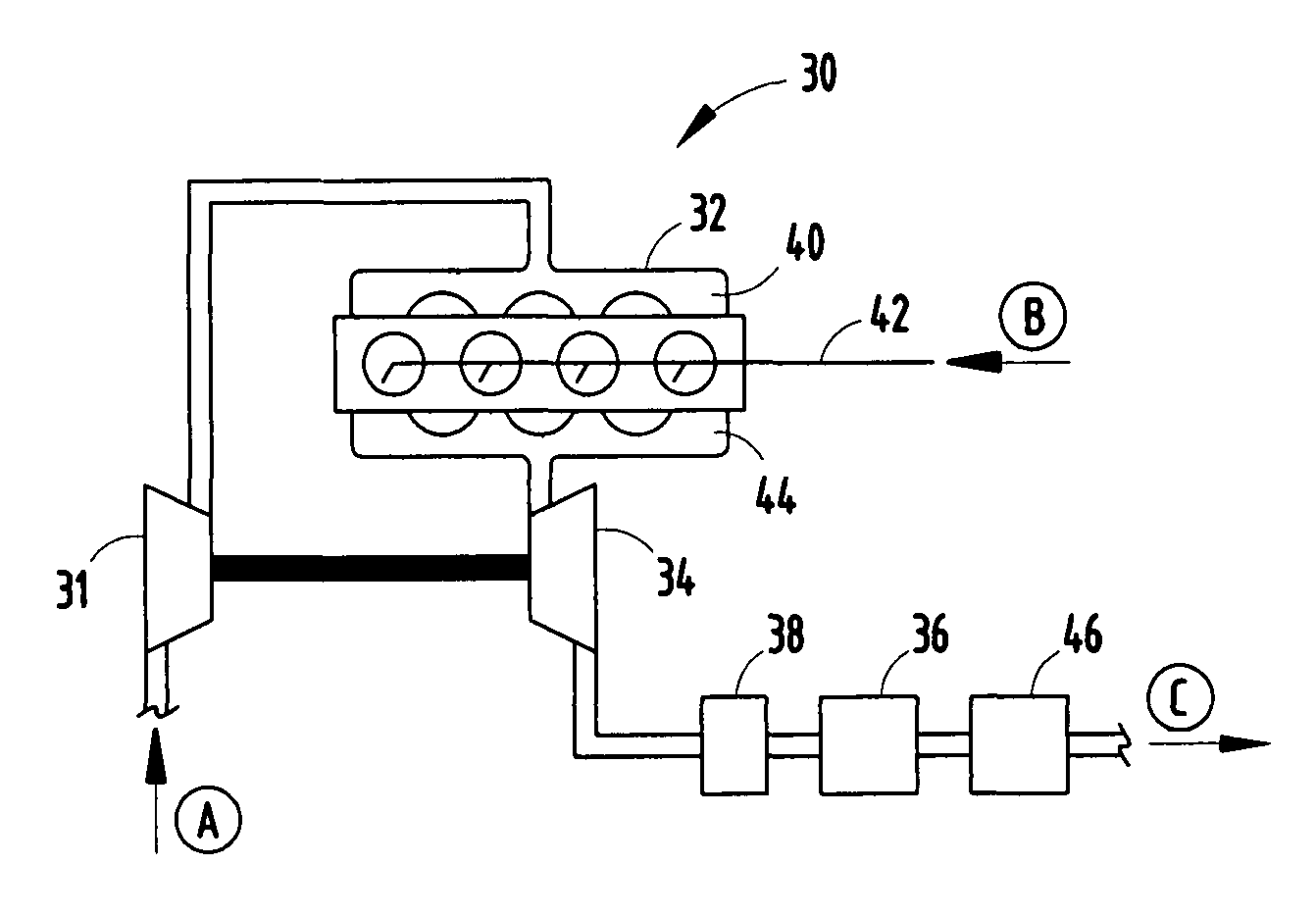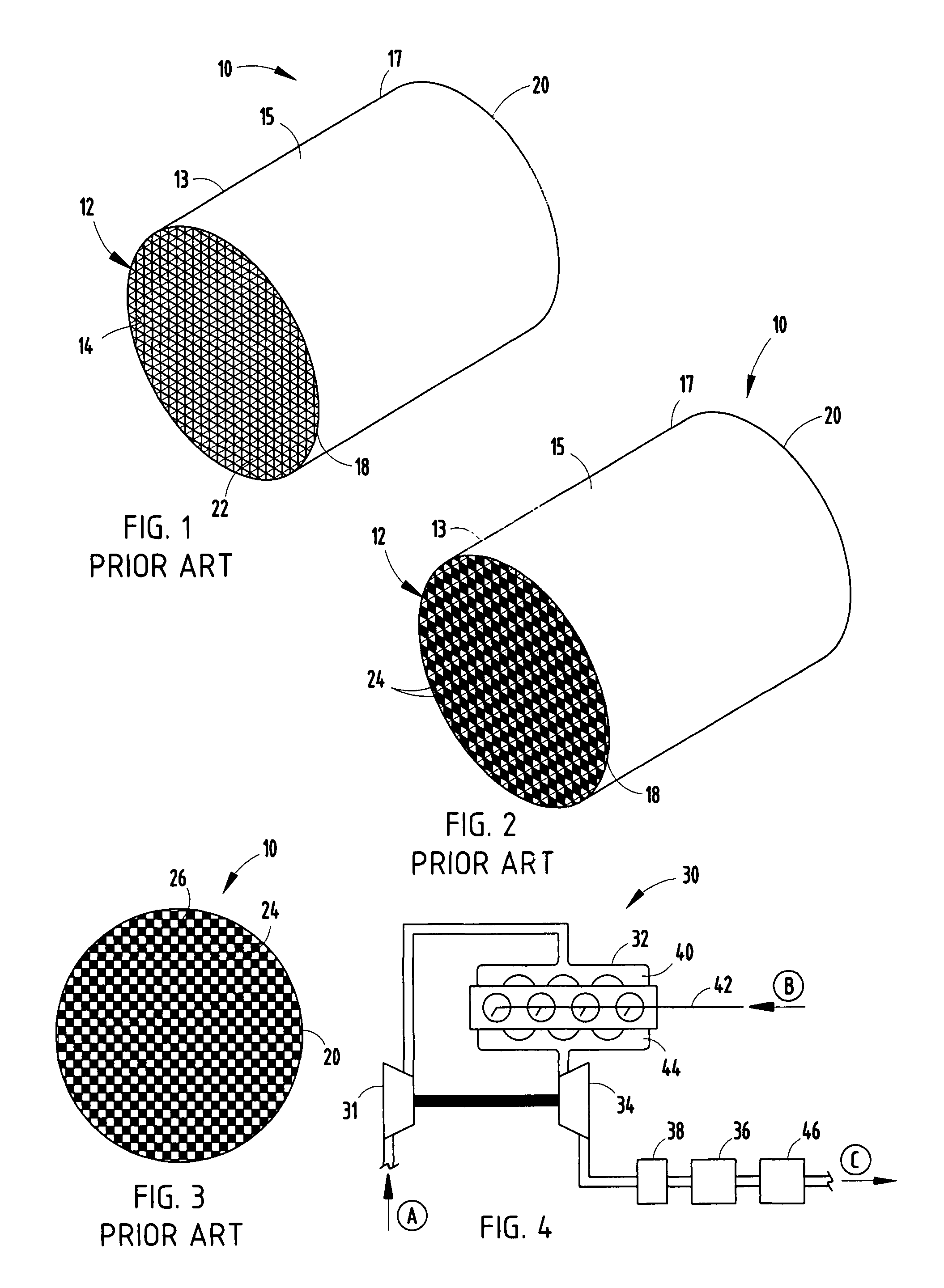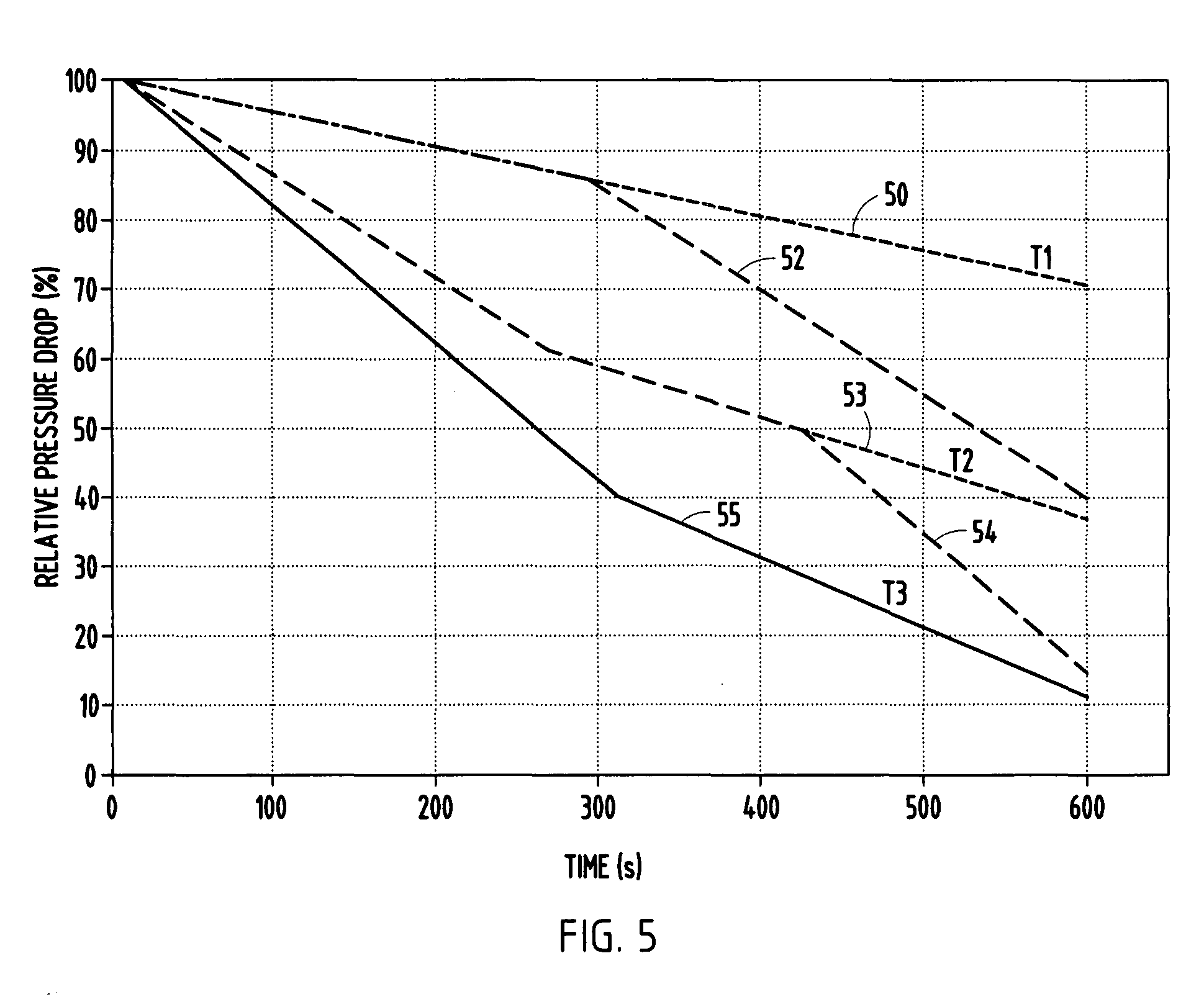Regeneration method for ceramic honeycomb structures
a technology of ceramic honeycomb and regenerative method, which is applied in the direction of electrical control, machine/engine, exhaust treatment electric control, etc., can solve the problems of high exo-thermal rate, high exo-thermal rate, and damage to the structure, so as to reduce the amount of particulate matter contained, reduce the amount of particulate matter trapped, and reduce the effect of particulate matter safe and time-saving
- Summary
- Abstract
- Description
- Claims
- Application Information
AI Technical Summary
Benefits of technology
Problems solved by technology
Method used
Image
Examples
Embodiment Construction
[0029]It is to be understood that the invention may assume various alternative orientations and step sequences, except where expressly specified to the contrary. It is also to be understood that the specific devices and processes illustrated in the attached drawings, and described in the following specification are exemplary embodiments of the inventive concepts defined in the appended claims. Hence, specific dimensions and other physical characteristics relating to the embodiments disclosed herein are not to be considered as limiting, unless the claims expressly state otherwise.
[0030]FIG. 4 illustrates a schematic view of a diesel engine system 30 to which the present inventive method can be applied. The diesel engine system 30 includes a compressor 31, a diesel engine 32, a turbine 34 and a diesel particulate filter 36. Alternatively, the diesel engine system 30 may also include an oxidation catalytic converter or diesel oxidation catalysts 38. The diesel engine system 30 may also...
PUM
| Property | Measurement | Unit |
|---|---|---|
| temperature | aaaaa | aaaaa |
| temperature | aaaaa | aaaaa |
| temperature | aaaaa | aaaaa |
Abstract
Description
Claims
Application Information
 Login to View More
Login to View More - R&D
- Intellectual Property
- Life Sciences
- Materials
- Tech Scout
- Unparalleled Data Quality
- Higher Quality Content
- 60% Fewer Hallucinations
Browse by: Latest US Patents, China's latest patents, Technical Efficacy Thesaurus, Application Domain, Technology Topic, Popular Technical Reports.
© 2025 PatSnap. All rights reserved.Legal|Privacy policy|Modern Slavery Act Transparency Statement|Sitemap|About US| Contact US: help@patsnap.com



